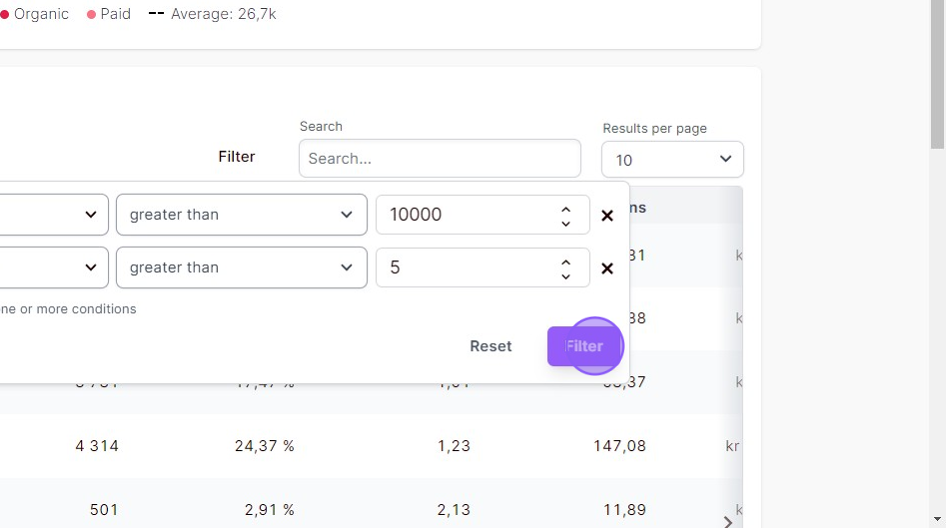Relative metric filters is a great way to analyze data, and to only focus on the subset of data that matters for your use case. If you want to avoid data blindness, and get more accurate results, our relative metric filters will help you along the way!
With the relative metric filters, you can explore data based on the relationship between a metric – or multiple metrics, and the unit.
As an example you can view all campaigns that have more than 1000 impressions, and less than 10 conversions, and more than 50 clicks, and so on.
You can find the relative metrics filters in various Fyr reports, including the Marketing Performance view and the Search Term Report, and we’ll use the Search Term Report as an example in this document.
1. Navigate to the type of report you’d like to analyze data from. In this example we’re using the “Search Term Report”.
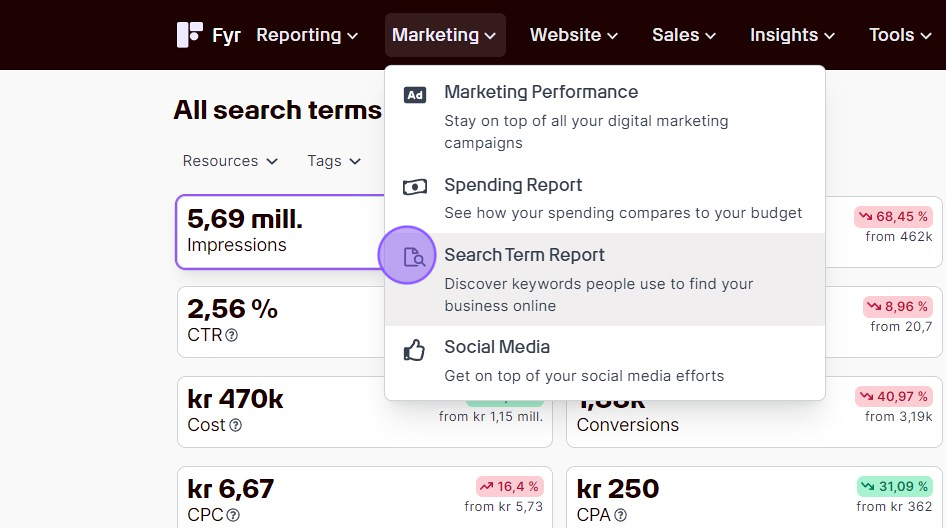
2. Click the “Filter” link in the subset of data you’d like to explore. In this example we’re exploring specific search terms.
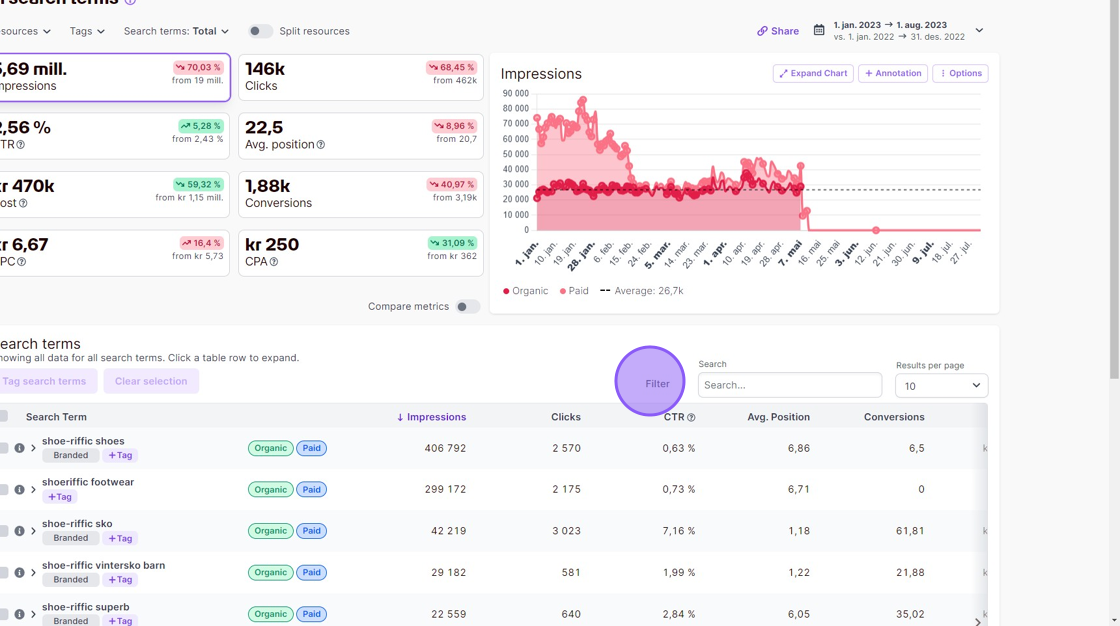
3. Select the metric you’d like to explore. In this example we want to look at all search terms that have more than 10 000 impressions in the selected time period.
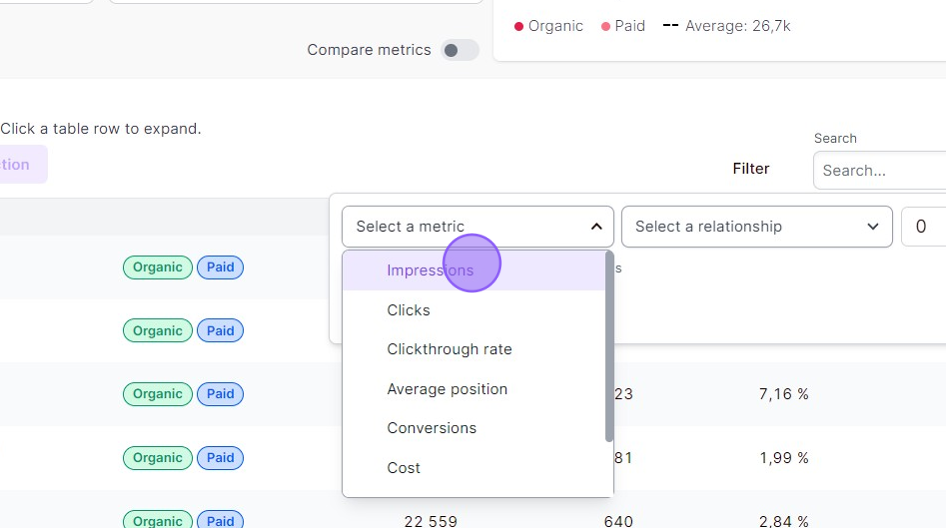
4. Select the relationship between the metric and the unit you’d like to explore. In this example we want to look at all search terms that have more than 10 000 impressions in the selected time period.
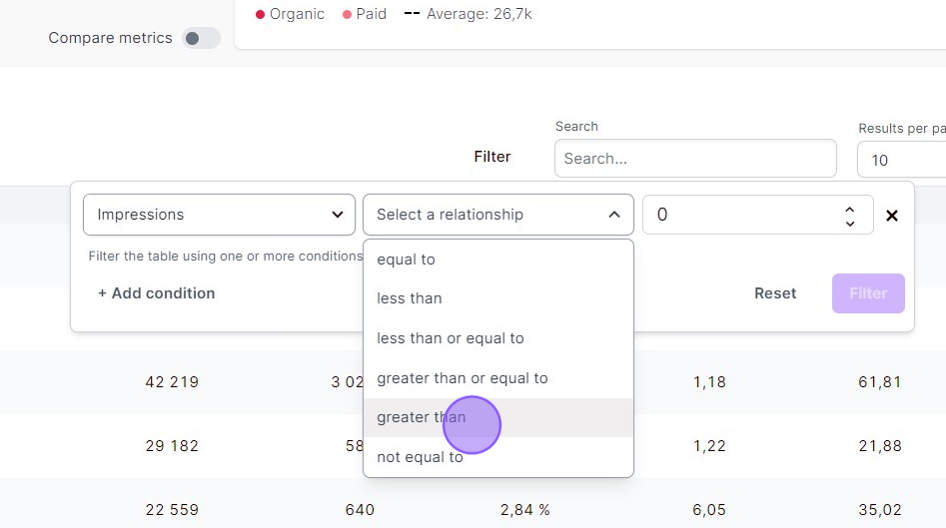
5. Select the unit. In this example we want to look at all search terms that have more than 10 000 impressions in the selected time period.
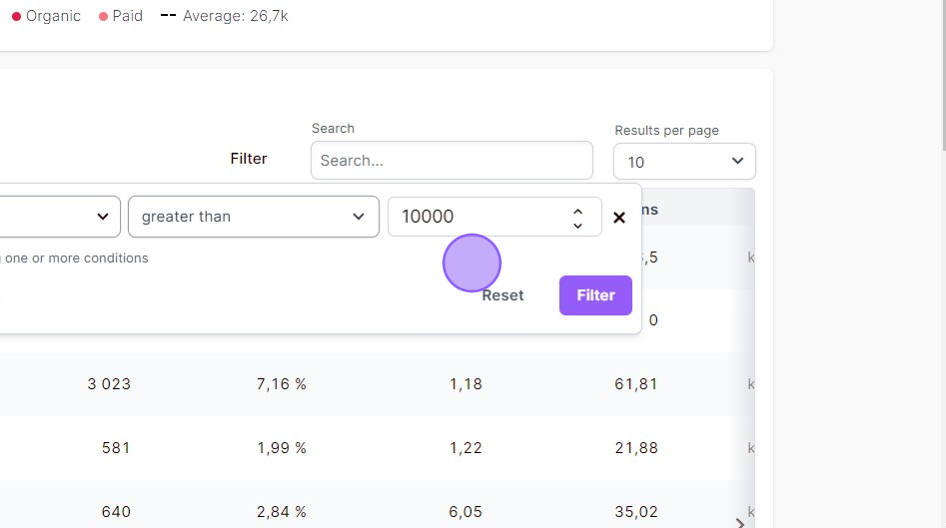
6. If you only wanted to look at search terms with more than 10 000 impressions, you could have clicked the “Filter” button at this point, but in this example we want to look at all search terms that have more than 10 000 impressions
and have an average ranking worse than top 5, so that we can explore search terms with great opportunity if they were ranking higher. For that reson, we click the “+ Add condition” button.
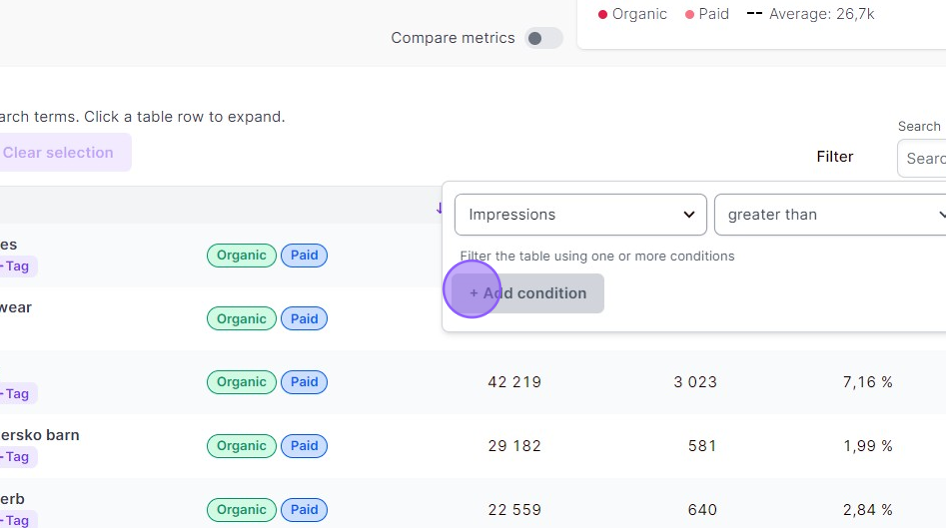
7. We select “Average position” as the metric.
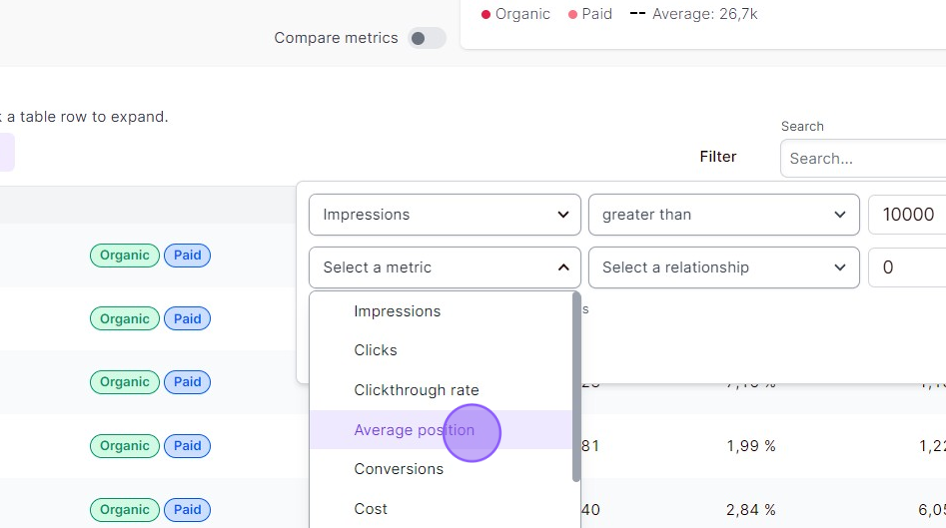
8. We select “greater than” as the relationship, because we want to see all search terms ranking below top 5.
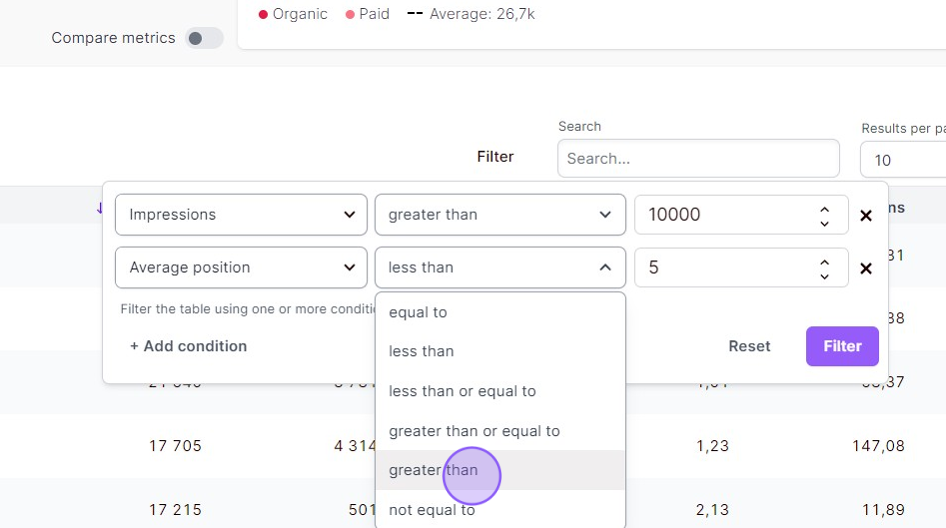
9. We add 5 as the unit, since we want search term with average position lower than 5, and we click the filter button. In the table now, we will only have search terms with more than 10 000 impressions, rankings outside of top 5, in the selected time period.
